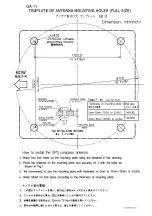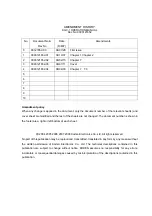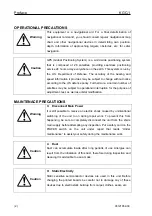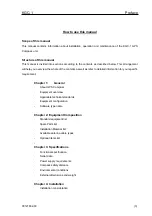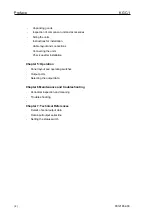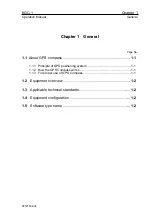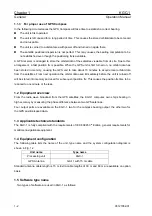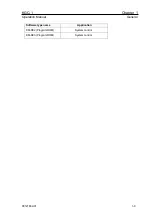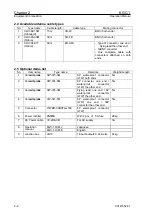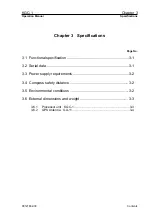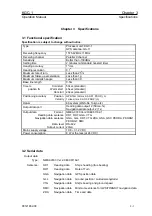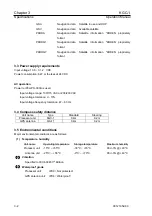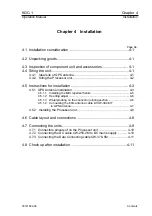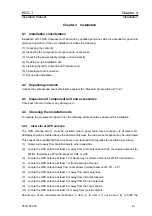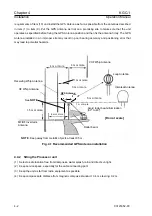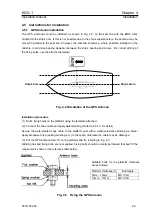
Chapter 1
KGC-1
General
Operation
Manual
1.1.3 For proper use of GPS Compass
In the following circumstances the GPS Compass will take time to establish a correct bearing.
The unit is first operated.
The unit is left unused for a long period of time. This causes the stored orbital data to become old
and not useable.
The unit is carried to a distant area with power off and turned on again there.
The satellite positional dispersion is not perfect. This may causes the bearing computation to be
not established even though the positioning fix is available.
A GPS receiver is arranged to store the orbital data of the satellites viewable from its site. Due to this
arrangement, a fast position fix is possible. When the GPS unit is first turned on, no orbital data has
been stored in memory, causing the GPS unit to take about 15 minutes to acquire local orbital data
from the satellites. From next operation the orbital data used immediately before the unit is turned off
will be stored into memory and used for subsequent position fix. This causes the position fix time to be
reduced to one minute or the less.
1.2 Equipment overview
From the radio wave broadcast from the GPS satellites, the KGC-1 computes own ship’s bearing in
high accuracy by measuring the phase difference between two GPS antennas.
Four output ports are available on the KGC-1, two for the compass bearing output, the other two for
the GPS position/speed data.
1.3 Applicable technical standards
The KGC-1 is fully compliant with the requirements of IEC 60945 3
rd
Edition, general requirements for
maritime navigational equipment.
1.4 Equipment configuration
The following table lists the name of the unit, type name and the system configuration diagram is
shown in Fig. 1.2.
Unit name
Type name
Processing unit
KGC-1
GPS Antenna
GA-11 with 15 m cable
Standard antenna cable length is 15 m. Extra cable lengths of 30 m and 60 m are available on option
basis.
1.5 Software type name
Two types of software are used in KGC-1 as follows:
1-2
93121652-01


